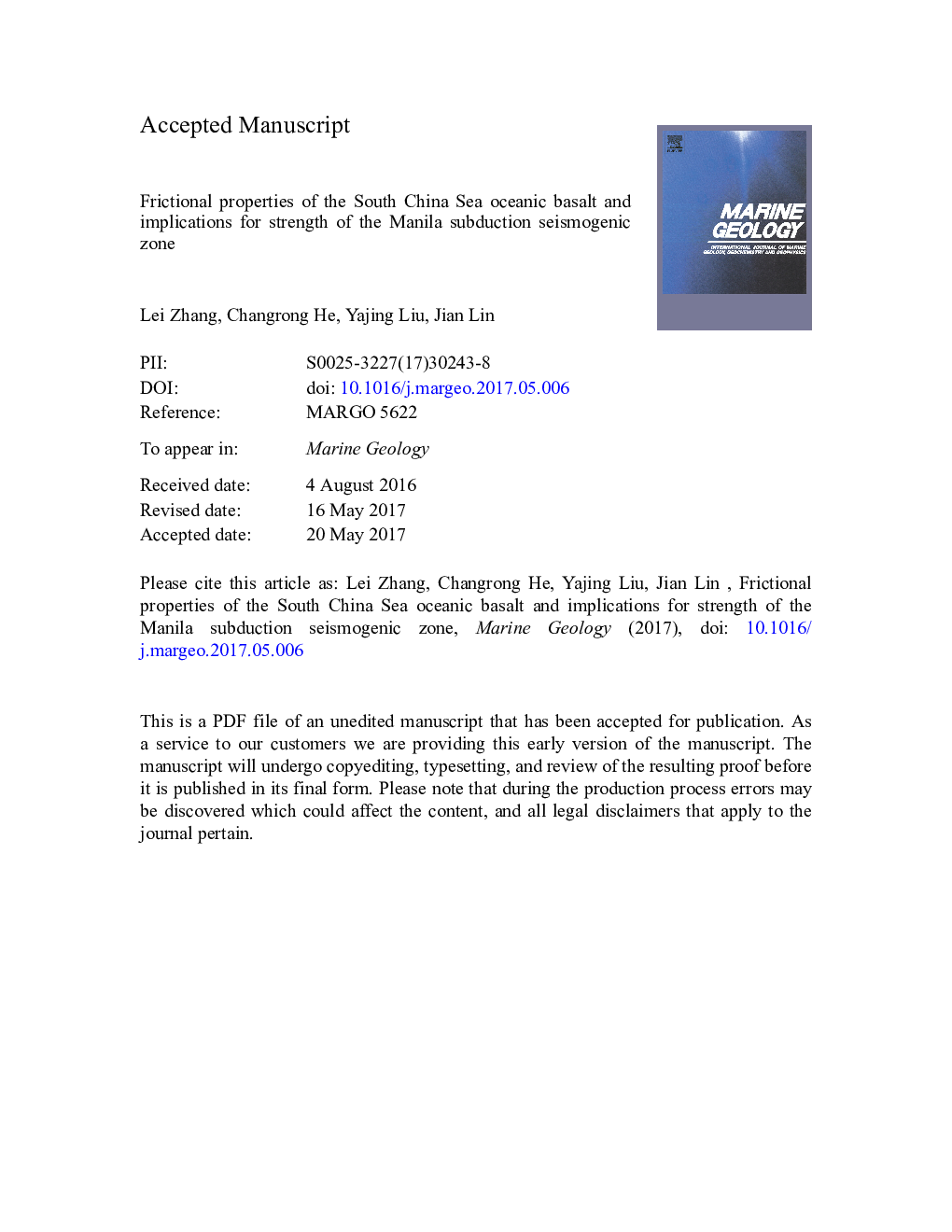| Article ID | Journal | Published Year | Pages | File Type |
|---|---|---|---|---|
| 8912060 | Marine Geology | 2017 | 52 Pages |
Abstract
We conduct friction experiments on a basalt sample (No. U1431E41R6W) from International Oceanic Discovery Program (IODP) Expedition 349 in the temperature range of 100-600 °C and effective normal stress of 50 MPa with 100 MPa pore fluid pressure. Loading rates are stepped up and down in the range of 0.04-1.0 μm/s to obtain the velocity dependence of friction. Based on the rate and state friction law, we numerically fit the experimental curves to acquire constitutive parameters that cannot be obtained by direct measurement. Experimental results show that basalt friction coefficient varies from 0.70 to 0.74, similar to the range of gabbro documented in a previous study (He et al., 2007). Stable velocity-strengthening behavior is observed at temperatures of 100 °C and 200 °C, and unstable velocity-weakening at temperatures above 300 °C with occurrences of periodic stick slips. Both a and b values inferred by numerical fittings show positive temperature dependence in the temperature range of 100-600 °C. The stick-slip motions above 300 °C seem to be due to a dramatic decrease in the characteristic slip distance dc from 11 to 15 μm to 0.4-2.5 μm. Based on our results and plastic flow laws of mafic rocks from a previous study, fault strength profile and slip stability of Manila subduction zone are discussed with calculations in the context of a unified friction-flow model. The inferred lower boundary of seismogenic zone of Manila subduction fault is around 40 km, which is in a reasonable range compared with seismicity data.
Related Topics
Physical Sciences and Engineering
Earth and Planetary Sciences
Geochemistry and Petrology
Authors
Lei Zhang, Changrong He, Yajing Liu, Jian Lin,
